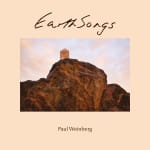Paul Weinberg South African, b. 1956
portfolio: 62 x 45 cm
Foreword
Land remains one of the most political and contested elements of South Africa’s past and
present. From the first encounters between indigenous inhabitants to later colonialists,
segregationists and the more recent democrats, land has been used to divide the country and her people.
But it has also drawn her people closer to her, enfolding them in a very sacred embrace. In this pristine collection of visuals, Paul Weinberg takes us to this side of the continuum,
elevating the meaning of land to this higher, more spiritual plane.
Weinberg has traversed the breadth of the South African landscape to portray its deep
and intrinsic meaning and encapsulate the inter-connections of cultures and peoples across
the spectrum of time. He traces these intersections from the first peoples, the San and Khoi,
whose domain this land was for centuries, to those who came from elsewhere on the continent
and from across the seas. His moving imagery harnesses the spiritual rituals of a cross-section
of southern Africa’s belief systems – indigenous, Muslim, Jewish, Zionist, Roman Catholic,
Buddhist and more. As you page through these visuals, you will have the unique opportunity
to gaze differently, and with deference, at the world we inhabit.
In a sense, Earth Songs eloquently draws together the ethereal or intangible realm of belief
and ritual with the very tangible soil that makes up our landscape. As the title indicates, it
chants the songs of the people who inhabit this southern stretch of African earth.
Karen Leigh Harris, PhD
Department of Historical and Heritage Studies
University of Pretoria





